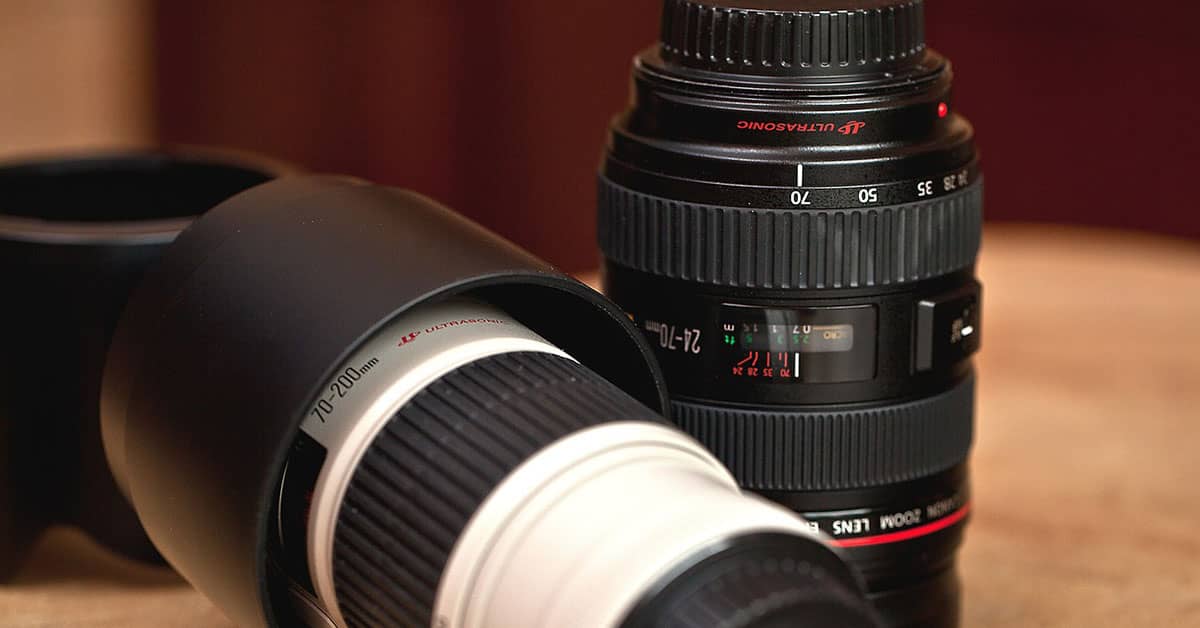Canon’s name almost always comes up when talking about cameras, and rightfully so. From advanced features to durable builds and prices that won’t require you to dig deep into your savings, it’s no wonder why Canon DSLRs are so in demand.
Although Canon cameras are capable of capturing stunning pictures, pairing them up with a Tamron lens is bound to deliver jaw-dropping pictures. Whether it be wildlife, landscape, street, architecture, or event photography, Tamaron lenses produce pretty sharp and vibrant images.
However, picking out a suitable Tamron lens isn’t a walk in the park. Trying to figure out the optimum focal length range, the best aperture range for your line of work, or which lens can produce the finest details can be a demanding task.
This is why we have compiled a list of some of the best Tamron lenses, depending on what kind of photography you are going for.
What are the best Tamron lenses for Canon?
From portrait photography and event shoots to architecture pictures, the Tamron lens will offer you high-resolution performance paired with your Canon camera.
We’ve listed some exceptional Tamron lenses below to help you out in different photography genres:
Tamron SP 70-200mm F/2.8 Di VC USD
First on our list is the Tamron 70-200mm lens. This lens, paired with any of Canon’s high-resolution DSLRs, is bound to produce incredibly clear and sharp images.
The 70-200mm wide focal range, when paired with a constant aperture of f/2.8, allows beginners and enthusiasts to shoot photos with endless creativity. The lens works great for portraits and even close-up shots.
The maximum aperture of f/2.8 makes it an excellent option for covering low-light settings. The wide-open aperture allows ample light to pass through, and when paired with suitable ISO settings, the lens helps to produce some fantastic, well-lit, and grain-free shots.
Don’t be fooled by the budget-friendly price it rocks for a highly durable build that won’t break easily. The 70-200mm feels solid in your hand and has a sturdy metal barrel, rubberized focus control, and zoom rings.
Moreover, the lens element has a flouring coating making it oil and water-resistant, so there’s no need to fear shooting under challenging environments.
Along with XLD (Extra Low Dispersion) and LD (Low Dispersion) glass to eliminate chromatic aberrations across the entire zoom range, the lens also features Vibration Compensation. This is an integral advancement in image stabilization technology that helps reduce motion blur so that you can consistently produce strikingly sharp images even at slower shutter speeds.
Summary: The Tamron 70-200mm, with its broad focal length range, a fast aperture of f/2.8, dust and moisture-resistant build, and image stabilization system, is an excellent choice for shooting sports, wildlife, and portraits.
Pros
- Extra low and low dispersion glasses used to reduce color fringing
- Crisp shots at f/2.8 across the whole zoom range
- Fluorite lens element used for weight reduction of lens
- Vibration Compensation feature to reduce motion blur
Cons
- Evidence of ghost and flare in pictures
- Bulky build
Tamron SP AF 90mm F/2.8 Di MACRO
Next we have the Tamron 90mm. This telephoto lens, known as the “portrait macro”, has a highly accurate autofocus system along with a fast maximum aperture that enables your Canon camera to provide intricate details in its sharp portraits.
This lens is exceptionally sharp when it comes to macro photography. The constant f/2.8 aperture ensures you still get enough light when stopping down the aperture to achieve a very narrow depth of field for great details.
Additionally, the Tamron 90mm is equipped with a switching mechanism that makes shifting from automatic to manual focusing easy and efficient. This is very handy when you try to get the most accurate focusing.
The 90mm focal length also provides an excellent perspective for portrait photography, and the fact that it’s a prime lens ensures that you capture sharp portraits.
The narrow-angle of view allows you to shoot from a comfortable working distance and produce a creamy and smooth bokeh with its 9-blade diaphragm that accentuates your subject not only in the foreground but in the background as well.
Summary: This is a high-performance lens featuring top-notch specifications with a fast constant aperture, narrow field of view, and lightweight body structure, making it ideal for macro and portrait photography.
Pros
- Negligible chromatic distortion
- Extremely sharp portraits
- Portable and light body structure
Cons
- No image stabilization
- Evidence of vignetting
Tamron SP 15-30mm F/2.8 Di VC USD
The 15-30mm is Tamron’s first high-performance ultra-wide zoom lens that gives you a wide range of coverage, a fast f/2.8 aperture, and offers image stabilization yielding outstandingly sharp images.
This lens’s construction includes an XGM (Expanded Glass Molded Aspherical) lens element capable of efficiently reducing chromatic aberrations and color fringing in the field of view. Additionally, the 15-20mm front lens element has a fluorine coating that prevents moisture from penetrating the lens.
Due to the lens’ BBAR (Broad-Band Anti Reflection) and eBAND (Extended Bandwidth & Angular-Dependency) Coating, the images produced are void of ghost and flare effects. This makes the lens perfect for shooting streak-less photos under the sun or in night lights.
The 15-30mm autofocus drive comes with a USD (Ultrasonic Silent Drive) motor that is incredibly quiet when capturing shots. In addition to being quiet, the USD motor also ensures accuracy and precision while capturing photographs.
The 15mm focal length of the lens is perfect for capturing a broad perspective, while the 30mm focal length is ideal for taking snapshots as it provides a semi-wide angle of view. With that said, it’s important to note that the image quality is maintained throughout the zoom range.
Since Tamron came out with its Vibration Compensation feature, the game of taking on-the-move photos has changed entirely. Thanks to this innovative feature, you can easily take clear and precise shots even at slower shutter speeds without requiring a tripod to keep your camera still.
Summary: The Tamron 15-30mm is specifically targeted to be used on full-frame (FX) cameras with its zoom range, fast aperture, and durable build lens, making it an excellent choice for capturing landscape and architecture.
Pros
- Exceptional low-light performance
- Optical stabilization.
- Ultra-wide angle of view.
- Durable and reliable build
- Fully weather-sealed
Cons
- Bulky body
- Heavy barrel distortion
Tamron SP 35mm F/1.8 Di VC USD
The next lens on our list is the Tamron 35mm. This prime wide-angle lens comes with advancements in its features, handling, and exterior design, dishing out some pretty cool pictures when paired with a Canon camera.
It has an extra-wide, f/1.8 aperture that easily handles low-light situations, producing high-quality grainless photos which require minimal post-processing.
Generally, vibrations and camera shakes can sabotage the image quality when shooting with fast aperture lenses. However, with the Vibration Compensation, Tamron can produce clear and crisp images even in lousy lighting and slower shutter speeds.
Featuring Tamron’s eBAND and BBAR Coating, the 35mm lens packs extra consistency and reduces the flare in your photographs. Meanwhile, the molded glass aspherical elements help lessen both spherical and chromatic aberrations.
Unlike most prime lenses in the market, the 35mm maintains image clarity even while shooting at a maxed-out aperture. Plus, the lens has minimal corner fringing when shooting at a higher aperture; and with a little post-processing, you’ll have some pretty bokeh-licious portraits!
Quick and quiet focusing is achieved due to this lens’s USD motor. Moreover, when shooting continuously, the camera shutter is synced with the lens, increasing the sharpness and speed of the in-built autofocus of your Canon DSLR.
Summary: With its big aperture and build that resists internal lens reflections, the Tamron 35mm is a versatile prime lens and a fine choice for street, landscape, and portrait photography.
Pros
- Low and extra-low dispersion glass to reduce chromatic aberrations
- Crisp shots at f/1.8 across the whole zoom range
- Exceptionally sharp portraits
Cons
- Heavy for its size
- Soft edges at wide apertures
Tamron 18-200mm F/3.5-6.3 Di II VC
Next up on the list is Tamron 18-200mm, one of the best telephoto zoom lenses up for grabs if you are into outdoors and traveling.
The lens opens you up to a wide range of photography options, with the 18mm allowing you to capture mesmerizing landscapes all the way up to the 200mm, which thrives in sports and wildlife settings.
This lens comes equipped with a DC Motor Gear Train AF drive module, which may be a long name to remember, but it does wonders. The feature makes image capturing quiet and fast, which allows the lens to excel in action shots.
Moreover, the lens also features IF (Internal Focusing) that prevents the barrel from extending and rotating during focusing, making it easy to use filters.
This lens’s optical design has been constructed with hybrid aspherical and low dispersion elements, which aid in minimizing chromatic distortions and color fringing throughout the zoom range for impressively sharp and color-accurate images.
With Tamron’s image stabilization mechanism, one can capture outstanding, shake-free photos indoors, at night, and in other low-light conditions. The 18-200mm also has VC technology which eliminates vibrations when shooting at lower apertures and shutter speeds.
Summary: The Tamron 18-200mm is a versatile lens with a considerable focal length range and a silent AF system making it perfect for wildlife and landscape photography.
Pros
- Fast and Accurate AF
- Thoroughly sealed against all elements
- Impressive image stabilization
- Budget-friendly price bracket
- Extremely lightweight body
Cons
- Evidence of chromatic distortion
Tamron SP AF 28-75mm F/2.8 XR Di LD Aspherical [IF]
Next, we have the Tamron 28-75mm on our list, one of the most effective lenses for shooting events.
It has a maximum aperture of f/2.8, which is remarkably fast and delivers impressively consistent performance throughout its zoom range.
Moreover, it efficiently tackles low-light situations, which isn’t something you’re in control of when shooting images outside without. Due to this, the lens is ideal for capturing bewitching sunsets or sunrises!
The 28-75mm optical zoom range allows beginners and veterans alike to tinker with their image composition without hiking up or down to get the perfect shot.
The Tamron 28-75mm is built with rigid and sturdy materials that promise durability and reliability even in challenging weather. Moreover, the lens is equipped with a rear rubber gasket to keep your camera moisture- and debris-free, making it a fine choice for taking outdoors.
This lens is one of the most compact and lightest in the history of zoom lenses, weighing only 0.8lbs. This is due to the lens’s sophisticated optical design, which incorporates XR (Extra Refractive Index) and LD glass, making the lens quite light. The XR and LD also aid in improving sharpness, and color accuracy, reshaping your photographic horizons.
Summary: This Tamron lens has the perfect focal length and maximum aperture for outdoor photography, such as shooting sceneries and nature.
Pros
- Exquisite low-light performance
- Extra refractive index and low dispersion glass for minimizing chromatic aberrations and flare
- Fully weather-sealed
- Durable body-structure
- Staggeringly light and compact
Cons
- No image stabilization
Tamron SP AF 60mm F/2 Di II LD [IF] MACRO
If you are interested in macro and portraiture photography, then the Tamron 60mm is a keeper, especially if you use a crop sensor camera. It has an equivalent focal length of 90mm to Canon full-frame cameras.
With a fast f/2 maximum aperture, the 60mm captures objects with creamy and smooth bokeh, even in low-light settings. The subject in the foreground stands out very well, which is helpful if the background is distracting.
Additionally, this lens is built with a pair of low-dispersion elements to minimize chromatic distortions and reduce color fringing at the corners, which is quite common when shooting macro shots. The images produced have great color accuracy and are almost entirely devoid of flare.
The 60mm lens is incredibly lightweight and can easily be tossed into any backpack without taking up too much space. It also comes at a pretty lucrative price point, making it an easy addition to your Canon camera bag.
That is not all, the Tamron 60mm has an ultra-fast autofocus system that allows the lens to sync perfectly with the camera shutter speed, maintaining the sharpness of the pictures.
Plus, the lens’s focusing mode will enable you to switch from manual to autofocus whenever needed, so you don’t miss out on any action of moving insects.
Summary: The Tamron 60mm is a medium telephoto macro lens that produces exceptionally sharp images and is also ideal for portraiture photography.
Pros
- Considerably lightweight body structure
- Extremely smooth bokeh
- Manual as well as an auto-focus mode with swift shifting
- Very sharp portraits
Cons
- No image stabilization system
- Evidence of color distortion
Tamron SP 70-300mm F/4-5.6 Di VC USD
The Tamron SP 70-300mm has a wide focal length range, making the lens ideal for travel, events, or even wildlife. While the f/4.5-6.3 aperture isn’t the best, it can still shoot in most lighting conditions.
The 70-300mm autofocus drive comes with a USD motor, ensuring extremely quiet focusing. Not only does the USD motor make the lens quiet, but it also makes it focus faster, making the telephoto lens perform exceptionally well while shooting moving objects.
The lens is weather-sealed with a dust- and moisture-resistant design. While this means that it won’t face any problems if you take it out in light rain showers, it is still not advised to take out the lens in harsher environments.
Tamron, just like with its other top-of-the-line lenses, has equipped the 70-300m with its Vibration Compensation feature. This image stabilization technology prevents camera shakes and vibrations from making your images a blurry streak of colors.
Moreover, the 70-300mm lens comes with BBAR (Broad-Band Anti-Reflection) coatings that reduce the lens reflection and dispersion that cause ghosting and flare, packing additional consistency in your photographs.
Meanwhile, the XLD along with the LD lens elements integrated into the 70-300mm, reduce advanced axial chromatic and magnification aberration correction even at the maximum aperture settings. This simply translated to high-quality images requiring minimal post-processing.
Summary: With the variable maximum aperture and broad focal length range, this lens is ideal for shooting wildlife, sports, and on-the-move objects.
Pros
- Low and extra-low dispersion glass to reduce chromatic aberrations
- Vibration Compensation feature to reduce motion blur
- Reasonable price bracket
- Compact and portable
- Fully weather sealed
Cons
- Does not work the best in low-light
Tamron SP 150-600mm F/5-6.3 Di VC USD
If you are looking for a good lens for wildlife or sports, you’re in luck, as the Tamron 150-600mm has all the features to help you capture the shots from afar.
The 150-600mm is equipped with an optical image stabilization system that works effectively for up to 4.5 stops. The improved Vibration Compensation feature also considerably minimizes blurring caused by camera movement. The feature even lets you shoot at slower shutter speeds than normal.
Due to the BBAR and eBAND Coatings on the lens elements, the 150-600mm improves light transmission. Due to this, any ghosting or interior flare produced from light entering the lens is significantly reduced across the wide focal length range.
Talking about the focal length range, the 150-600mm is more than capable of capturing stunning photographs in several settings. Plus, there are very few telephoto zoom lenses that go up to 600mm and match Tamron’s features and price bracket.
The lens is also equipped with three LD elements, which effectively compensate for any chromatic distortions you might get while shooting images at a wide angle.
Summary: This Tamron lens has the perfect focal length for capturing wildlife. Additionally, it produces high-resolution images and has good build quality.
Pros
- Impressive image stabilization
- Precise AF
- Thoroughly sealed against all elements
Cons
- Evidence of distortion
- Premium price bracket
Tamron AF 28-300mm F/3.5-6.3 XR Di VC LD Aspherical
The last lens on our list is the Tamron 28-300mm. The lens thrives when paired with Canon’s exceptional cameras, making it a staple all-in-one lens.
The 28-300 mm has a fast and incredibly precise AF system with a built-in ring-type motor that is incredibly quiet. This is perfect when you want to target moving subjects.
The optical system of the lens also incorporates XR, GM (Glass-Molded) elements, Hybrid Aspherical, LD, and AD (Anomalous Dispersion) glass elements to compensate for chromatic aberrations. In simpler words, your images won’t require much post-processing if you aren’t shooting at extreme focal lengths.
The lens’s 28-300mm focal length opens up many photography genres for you, making it perfect for beginners.
Plus, the zoom variations coupled with the lens’s expansive field of view allow you to tinker with compositions and get creative with your shots.
The 90mm is equipped with Digitally Integrated Design (DI) which aids in delivering exceptional pictorial performance for DSLRs. One may think that this might affect the body structure of this lens, making it bulky, but it does not. This Tamron lens is incredibly compact and lightweight, considering its competitors.
Summary: With its precise AF and focal length range, this lens is perfect for wildlife and street photography.
Pros
- XR, GM, AD, and LD glass elements to significantly reduce chromatic distortions and aberrations
- Snappy autofocus
- High-resolution images
- Compact and lightweight body structure
Cons
- No image stabilization
- Not the best for low-light conditions
Conclusion
While Canon cameras are an absolute powerhouse, getting a premium L-series lens to complete your duo isn’t in everyone’s budget. That’s where Tamron shines, producing almost equally capable lenses minus the ridiculous price point.
We hope our list of the best lenses helped you pick a suitable lens to partner with your Canon camera. Note that while all of the lenses listed above are pretty great themselves, the choice of what you should choose depends on the type of photography you want to pursue!






